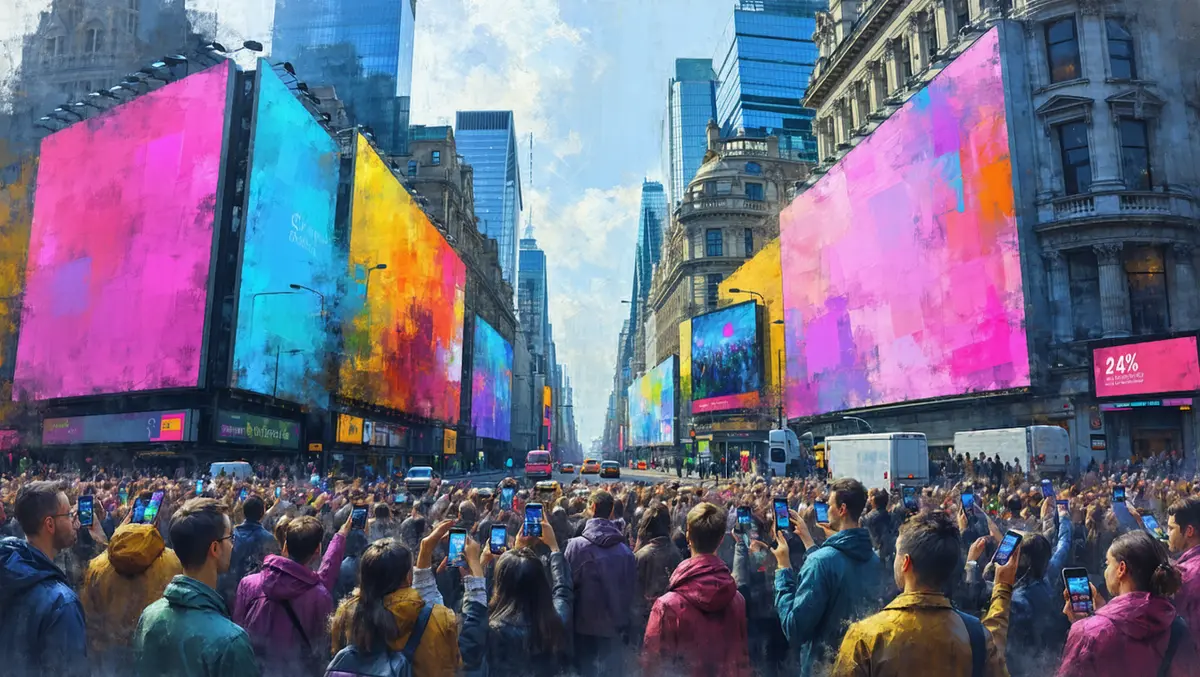
UK non-gaming ad spend surges by 48% with AI boost
AppsFlyer has released its annual report on mobile app trends, highlighting significant shifts in non-gaming ad spend and advanced monetisation strategies.
This year's report shows a notable expansion in non-gaming ad space, with in-app purchases (IAPs) outside of gaming increasing nearly 20%, driven by sophisticated monetisation strategies and inflation-related price hikes. In contrast, gaming IAP revenue either remained steady or declined slightly with Casino games up 4%, Midcore games down 2%, and Casual games down 5%.
Non-gaming app advertising saw a global increase of 8%, but the UK experienced a significant surge with a 48% year-on-year (YoY) rise, attributed to the adoption of advanced monetisation strategies and the expanded use of deep linking. In comparison, gaming ad spend in the UK fell by about 9% YoY, which is in line with global trends, although the decline is less marked than in other regions such as Japan and France.
Finance and travel apps were among the leading categories in terms of ad spend growth globally. Finance apps recorded an impressive 61% YoY increase, fueled by the rise of Crypto and FinTech. Meanwhile, travel ad spend grew by 20%. In contrast, shopping ad spend experienced a decline of 8% as the market normalised after the sharp increase in 2023 influenced by major Asian companies entering global markets.
"After a remarkable 48% YoY increase in 2024, we expect non-gaming ad spend to continue leading the way in the UK 2025," said Paul Wright, General Manager Western Europe and MENAT at AppsFlyer. "This growth is fueled by advanced monetisation strategies and the adoption of owned media technologies, which are enhancing personalisation and driving hybrid experiences. AppsFlyer is committed to empowering businesses with the tools and insights they need to navigate this dynamic and evolving landscape."
Among other key findings, the report identifies a 26% YoY growth in in-app advertising revenue in non-gaming sectors and 7% within gaming, driven by hybrid casual monetisation strategies. Furthermore, generative AI apps saw a particularly high growth rate of 200% YoY.
There was also notable growth in leisure app categories, with installs booming across Casinos and Gambling (+102%), Sports Betting (+93%), and Lifestyle (+43%). Meanwhile, app categories perceived as "needs-based," such as Transportation and Utility, remained stable.
A significant trend was the cross-vertical investments, where major gaming ad networks saw a 38% YoY increase from non-gaming investments into gaming inventories. This contrasts with a 19% decline in gaming investments within the gaming market, a trend expected to continue into 2025.
In terms of gaming-specific trends, Casual games saw a modest 3% increase in ad spend, establishing a market share of 64%. Hypercasual games experienced little change (-1%), whereas Mid-core and Casino games faced steeper declines of 21% and 12%, respectively.
Adoption of deep linking expanded significantly, showing 77% growth for web-to-app channels, with email-to-app increasing by 45%, text-to-app by 29%, and QR-to-app by 16%.
The trend of remarketing surpassing new user acquisition was strong, with a 22% growth in remarketing conversions on paid channels, substantially outstripping the 2% growth in new user acquisitions.
AI-driven creative innovation played a considerable role, with app creatives increasing by 40% to around 839 variations per month, particularly among apps with larger budgets. This growth highlights the importance of measuring creative performance amid the growing scale required for success.


